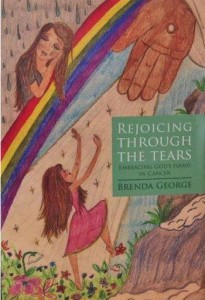Guest post by Ram Dass
In the 21 century, meditation is making a resurgence as a practical tool for coping with life and nurturing personal growth. In fact, it has become very common to use meditation techniques for stress and anxiety relief-ever for banishing panic attacks.
The benefits of meditation for anxiety and stress include reducing physical discomfort, putting things into perspective to make better decision and coping with difficult situations.
Every individual has different reasons for meditating, from relieving job stress and reducing anxiety of all kind and minimizing physical pain to improving relationships and determining life’s direction. No matter what the stress or anxiety, meditation can provide immediate relief. Later, meditation can be used to get to the heart of anxious feelings and make deeper changes.
How to Meditate to Relieve Anxiety
- If you already know the nature of you anxiety and stress, simply find it (or something similar) in this list of meditation tips for anxiety and focus your meditation practice in the recommended areas.
- If you are new to meditation, begin by reading this article by Ram Dass to learn about different meditation techniques, such as insight meditation with breathing, meditating on gurus and mantras. You’ll find techniques and ideas throughout the Ram Dass website and elsewhere that can help you improve the effectiveness of your meditation for anxiety or any other reason, including using mala beads or meditation beads, meditating on a flame and other ways to focus as you practice. It’s easy to gain meditation skills you can use right away!
- On the other hand, don’t worry if your experience doesn’t live up to your expectations of meditation. There are likely to be many good things going on that you can’t see immediately. Later, you can search for guided meditations and other advanced techniques that deepen your relief from anxiety as well as deeper knowing of yourself as you continue to practice.
01 Meditation To Calm Chaos
I’ve been living closer to the truth for a few months now. Over time, my daily meditations helped me regard what was happening in any moment with curiosity and kindness, without the mindless chatter and instant evaluation that used to whip me into a frenzy.
http://www.prevention.com/mind-body/emotional-health/meditation-find-calm-chaos
The meditation/anxiety connection:
Chaos demands our attention. It’s like a bratty child, jealous of our peace. Chaos will do everything in its power to suck you in and keep your stress level high. With meditation, you can use the quietness of your mind to surround and subdue chaos. Let it go easily somewhere else, while you apply your energy to reaching out into the universe for answers. Let the answers come to you as easily as you let chaos go.
Meditation advice for calming chaos:
- Chaos often causes physical stress, a common side effect of anxiety. As you meditate, breathe in to invite space into your entire body, then breathe out to release tension.
- Meditation techniques can be used to adopt an attitude of acceptance. No matter what happens, you can give yourself permission to be peaceful.
- Use meditation to visualize yourself floating above the conflict, where you have a match wider perspective.
02 MEDITATE TO MANAGE ANGER
By naming and recognizing the many faces of anger, we can stay present with it as it arises, keeping the heart open, breathing, watching emotions come up and pass through. Meditation is the best way to do this, as it creates the space to step back from the passion, breathe, and objectively see what is at the root of the feeling.
http://www.huffingtonpost.com/ed-and-deb-shapiro/meditation-and-anger_b_3170506.html
The meditation/anxiety connection:
Anger is a difficult form of anxiety. We often become consumed with the accompanying stress and anguish because meditation stems from quietness, it allows you to take yourself away from anger’s usual stressful breeding ground, where you can examine the emotion honestly and safely apart from your day-to-day world. When you meditate for anxiety relief, your awareness is stronger than your anger.
Meditation advice for managing anger:
- During meditation, first try not to think too logically about the reasons you feel angry. You can figure that out later. For now, just breathe and observe your anger.
- Meditation relieves the anxiety of anger and puts it in perspective, but meditation won’t take away the causes of anger. Once meditation ends, you may need to take action to resolve the issues.
- Think of meditation as a safe place to be angry, where you can step away from the emotion and observe it to see what you can learn.
03 MEDITATE TO LET GO OF DRAMA
Don’t treat yourself so gingerly; you can let go of stuff. Sometimes it takes three breaths instead of two to do it, but you can do it. Be a little tougher and don’t cling to stuff. People go around carrying everybody’s stuff all of the time. I just pick it up and put it down. Pick it up and put it down.
Ram Dass
The meditation/anxiety connection:
We have a bad habit of gathering up dramatic feelings and situations, clutching them to us as if they were prized possessions. We feel we are entitled to our ownership of this anxiety, and we believe we must hold onto it in order to keep ourselves emotionally safe. It takes a little courage, but meditation can help us see and nurture our internal strength, so we can separate ourselves from drama and achieve anxiety relief.
Meditation advice for letting go of drama:
- Visualization during meditation is a useful tool to define drama, understand it and let it go. Choose a tangible object to represent your anxiety. Imagine picking it up, then putting it down.
- Before you can let drama go, you may need to first understand why you so desperately want to cling onto it. If you can’t understand it, let it go anyway.
- Drama tends to be a bad habit. To break habits, You need to address the habitual patterns that created the habit in the first place.
04 MEDITATE TO SEE YOUR PATH
In order to see the path, you have to be very quiet and stop thinking.
Ram Dass
The meditation/anxiety connection:
In case you haven’t figured it out by now, using meditation for anxiety and stress often hinges on finding quietness. If your anxiety is caused by not knowing which direction you should go, quietness can help you accept the answers, rather than forcing them to come. This also requires that you allow yourself to accept the path that appears to you naturally, rather than forcing your way onto a path out of fear and panic.
Meditation advice for seeing your path:
- As you meditate, visualize a path through a forest, down a mountain, along the beach, into a city – wherever you are comfortable – and allow your mind to lead you to the answers.
- Quietness is hard to achieve for many people. Don’t give up – you will do better with practice.
- Simply practice letting go of thoughts as they come to you, then returning to the focus of your meditation, whether it’s your breath, a flame, or a mantra.
05 MEDITATE TO IMPROVE HEALTH
Through Mindfulness-Based Stress Relief (MBSR), patients learn how to mobilize their inner resources for coping and healing – especially for dealing with symptoms of chronic illness, and symptoms that no longer respond to standard medical treatment. Mindfulness practice helps people promote their own health by reducing the effects of stress in mind and body.
http://meditationforhealth.com
The meditation/anxiety connection:
We’re learning more every day about the connection between the mind and body. Meditation harnesses the power of the mind to make healthy changes in the body. One of the first benefits of meditation is relaxation and comfort. This can be measured by traditional medical means, including blood pressure, heart rate, and a decrease in anxiety-related symptoms, such as headaches and muscle tension.
Meditation advice for improving health:
- Focus on specific physical ailments to realize the greatest effect of meditation for health.
- Visualize the parts of your body involved in your physical stress; imagine muscles relaxing, joints loosening and organs working better.
- Breathe healing energy into those areas of pain and discomfort.
06 MEDITATE TO FEEL THE NATURAL PACING OF LIFE
Let it be something that naturally falls away, rather than something you rip away.</div
Ram Dass
The meditation/anxiety connection:
Anxiety can be caused by forcing life to happen against the natural flow. The harder we push, the more difficult life seems and the higher our anxiety and panic rise. It’s better to let go and let things happen naturally. Meditation brings anxiety relief by simply focusing on goals and allowing them to unfold.
Meditation advice for feeling the natural pacing of life:
1 Stop focusing on your effort to achieve something and instead simply create a vision of what you desire, then focus on that as you meditate.
2 When you think of your goal, imagine watching it and waiting to see what happens, instead of thinking about what you must do to force it to happen.
3 Give yourself permission to let problems and anxious feelings fall away naturally; look at them with indifference and spend your time mentally reinforcing the positive instead.
07 MEDITATE TO SEEK SIMPLICITY
There is as much joy in doing with less as there is in doing with more; it’s bizarre, and much cheaper! It also means you have to spend less time being worried about your economic situation, because you are spending less.
Ram Dass
The meditation/anxiety connection:
The less you have in life, the less you have to worry about. However, achieving a simple life can be easier said than done. Meditation helps internalize the benefits of simplicity in life, and therefore makes it possible to not only desire simplicity but make it real. An immediate result of making a decision to focus on simplicity is anxiety relief, because you instantly have fewer problems you must address.
Meditation advice for seeking simplicity:
1. As you meditate, visualize life without the extras. What can you do without? Would you really miss those things, or would there be more room for joy as your possessions decrease?
2. Increase your meditation focus on intangibles, such as love, beauty and peace, instead of giving mental and spiritual power to possessions.
3. Give yourself permission to trade the joy of having for the joy of not having.
08 MEDITATE TO SEE YOUR PATH
The quiet appreciation of the total situation and its inherent possibilities steadily moves things toward resolution.
Ram Dass
The meditation/anxiety connection:
Focusing too narrowly on stressful problems can bog down the mind and heart and keep us from moving forward. The harder we try, the more muddled everything becomes and the more anxious we feel. The key to clarity is to slow down and think positively about the big picture. As you meditate on the big picture, you begin to see how things fit together – how you fit into the world. This brings peace and anxiety relief.
Meditation advice for seeking clarity:
1 Choose a mental picture that represents the complete situation you are facing; this image helps your mind retain its focus on the big picture, instead of getting lost in details.
2 Allow your subconscious to work on the situation without your participation; you will be surprised how much can be solved when you let fears work themselves out.
3 At the end of your meditation, focus your mind more concretely on any solutions or ideas that rise up and write them down to think about later.
09 MEDITATE TO LET THOUGHTS GO BY EASILY
Well, if I can’t stop thinking, maybe I can just let my thoughts go by without getting all caught up in them. Feel the breeze on your face or your neck? See how it’s going by? You’re not all hung up with it. You don’t have to see where each breeze goes. Make your thoughts like those breezes, those little breezes…just going by.
Ram Dass
The meditation/anxiety connection:
Anxiety rises as we wrestle with thoughts. The harder we think, the higher the anxiety. Especially if thoughts are negative or fearful, it can be difficult to let them go. They carry a compelling presence. The trick is to choose something else as the focus of your attention and imagine your anxious thoughts are light and airy. Acknowledge them as you would a light evening breeze, then let the breeze blow on by.
Meditation advice for letting thoughts go by easily:
1 Imagine you are simply a passerby, noticing your anxious thoughts as a part of the landscape, then moving your attention to another object that makes you feel better.
2 If you are unsure which thoughts are causing anxiety, begin your meditation, then take a mental inventory of all the people, places and things in your life – notice when the feeling of anxiety appears and let it go on the spot.
3 Some people add symbolic actions to meditation to help them identify thoughts and let them go. Try writing your fears onto pieces of paper, then burning them in the fireplace.
10 MEDITATE TO RELAX YOUR BODY
Scientific studies of Indian yoga masters demonstrate that meditation can, in fact, slow the heart rate, lower the blood pressure, reduce the breathing rate, diminish the body’s oxygen consumption, reduce blood adrenaline levels, and change skin temperature.
http://www.health.harvard.edu/staying-healthy/exercising-to-relax
The meditation/anxiety connection:
Anxiety and stress cause the body to tighten up, breath to quicken, and arteries to narrow. Nothing in our bodies works as well when we’re feeling anxious. Then, when we are not feeling well physically, we just keep feeling more anxiety. Meditation for anxiety breaks this vicious cycle by creating a state of mind in which the body naturally and easily lets go of all the tensions and anxieties blocking your ability to relax.
Meditation advice for relaxing your body:
1 Read about yoga and the ways it delivers us from contact with pain. One good resource is B.K.S. Iyengar’s Light on Yoga.
2 Meditation can be used to relax the body and promote healing after major surgeries or traumatic physical events. Meditation is often an official part of recovery protocols.
3 If you have trouble relaxing muscles, try first clenching them tightly as you breathe in, then releasing all the tension as you breathe out.
11 MEDITATE TO STRENGTHEN YOUR FAITH
I have the sense that as your faith gets stronger, you keep needing less and less, and when your faith is flickering, you keep wanting more security. But as your faith gets stronger, you just keep letting it go and letting it go.
Ram Dass
The meditation/anxiety connection:
What do you need to have faith in? Yourself? A power greater than yourself? Your circumstances? A future path? As faith grows, it fills voids and blasts away depression. As you experience fulfillment, as Ram Dass did when he spent a day with the his guru Neem Karoli Baba, your anxiety will wither away. Meditation techniques strengthen faith by making time and space to connect and open your heart.
Meditation advice for strengthening faith:
1 Familiarity strengthens faith, and time breeds familiarity. To grow your faith, dedicate regular amounts of time meditating specifically to nurture your faith.
2 Don’t push too hard to feel faith. Pushing only creates more anxiety and stress. Doubts and questions are a part of the process – simply open yourself to faith and let it grow.
3 If your desire to strengthen faith relates to a specific person, source or situation, maximize your results by meditating on a mental or physical symbol that represents the object of your faith.
12 MEDITATE TO CULTIVATE MINDFULNESS
The interesting thing about cultivating mindfulness in golf [as an example] is that what you are cultivating is a part of your mind that is noticing the rest of the game, the rest of life … is noticing everything else that’s going on … is noticing, ‘Now I’m speaking’. The ‘noticer’ is not the same as the ‘speaker’; they’re two different things. This has no judgment; it’s just noticing how it is.
Ram Dass
The meditation/anxiety connection:
Mindfulness means becoming aware of everything around you – the sights, sounds, smells and feel of where you are and people you’re with. Make no judgments. Simply allow yourself to see, hear, smell and feel. Mindfulness meditation provides perspective and breaks the cycle of worry and anxiety that happens when your focus is clamped down on narrow thoughts with no connection to the rest of the world.
Meditation advice for cultivating mindfulness:
1 Mindfulness is one of the best ways to use meditation for stress and anxiety relief. Think of it as giving yourself permission to slow down, connect and take a break from worry.
2 If you find it difficult to sustain attention as you meditate, try visualizing yourself from above. Watch yourself meditate and notice everything around you in the room.
3 Mindfulness inevitably expands your awareness of other people and enhances your relationships, which tends to relieve anxiety and stress.
13 MEDITATE TO RELEASE JUDGMENT
When you go out into the woods and you look at trees … some of them are bent, and some of them are straight, and some of them are evergreens, and some of them are whatever. And you look at the tree and you allow it. You appreciate it. The minute you get near humans, you lose all that. So I practice turning people into trees. Which means appreciating them just the way they are.
Ram Dass
The meditation/anxiety connection:
It’s hard not to judge. As humans, we almost can’t help ourselves. We instinctively know it’s not right to judge, so we end up judging ourselves! All of this judgment causes anxiety and unhappiness. You can use meditation to release the judgment and anxiety you feel, allow others to be who they are and let go of responsibility for them. Not having to judge is a big relief, and it frees us to focus on more peaceful things.
Meditation advice for releasing judgment:
1 As you meditate, briefly acknowledge every judgmental thought that comes into your mind, then simply release it and refocus on your meditation.
2 In your meditation, practice witnessing without judgement. The more you practice, the easier it will become to replace judgment with compassion.
3 Consider exploring karma yoga, which focuses your meditation on serving others rather than judging them, then offering your service as a devotion to achieve greater peacefulness.
14 MEDITATE TO ALLOW EMOTION
Getting lost in your emotional reactivity just digs a deeper karmic hole. So you cultivate a quietness in yourself that just watches these things coming and going and arising and passing away. And you learn not to act out your emotions, but just to appreciate and allow them.
Ram Dass
The meditation/anxiety connection:
Stress and anxiety are made of emotion. We feel this pain both physically and mentally. Sometimes we pull pain to us because it’s familiar. Other times, we strain as we push stress and anxiety away from us, but the harder we push, the more they grow. The secret is to embrace these emotions and others, such as depression, by focusing on those feelings, then learning from them and moving forward peacefully.
Meditation advice for allowing emotion:
1 Stress and anxiety often result in panic. If you are overwhelmed with panic, begin your meditation by simply observing your emotions without trying to figure anything out.
2 Sometimes it’s hard to figure out exactly what your emotions are. To better understand your emotion, first concentrate during meditation on the feeling without giving it a name.
3 When a strong emotion arises, take three breaths into the center of your chest (your spiritual heart) and allow the emotion to dissipate like a wave when it hits the shoreline.
15 MEDITATE TO REMOVE DEFENSE MECHANISMS
The nature of a defense mechanism is that most of it is underground and you’re not even conscious of it. It’s just acting on you, from a deep fear. To me, it’s a little bit like skimming soup when you meditate and get really quiet, and then, in the quietness, stuff starts to come up. If you’re quiet enough, you sort of skim it off the top as it comes up.
Ram Dass
The meditation/anxiety connection:
Everyone gets defensive. Our defense mechanisms sometimes keep us from being able to honestly face our fears and anxieties, which creates additional anxiety. Through meditation, we can more clearly see our defenses and skim them off, which immediately reduces our anxiety because we are then able to see our fears clearly, be more honest with ourselves and realize we are moving toward improvement.
Meditation advice for removing defense mechanisms:
1 After reaching a state of quiet through techniques of meditation for anxiety, mentally state your intention to identify and remove your personal defense mechanisms.
2 Once you have identified your defense mechanisms, practice letting them go and then returning to an awareness of your breath.
3 The next step is to work on the fears your defenses were masking.
16 MEDITATE TO HEAR THE SILENCE
My universe involves using silence and not waiting for something to happen, because the silence is what’s happening, because you and I come here seeking truth and the best I can understand it is that truth is not conceptual, that what you can think about isn’t the ultimate truth.
Ram Dass
The meditation/anxiety connection:
Anxiety and stress can be caused by a feeling that you should understand the truth about things in your life, along with the conflicting belief that you are not capable enough to really know the truth. Use the quietness of meditation to open yourself to a truth that doesn’t need to be put into words. You can reduce your anxiety right now by being okay with whatever part of truth you see in this moment of silence.
Meditation advice for hearing the silence:
1 It stands to reason that many truths about the universe go beyond the inadequate words of human beings. As you meditate, notice thoughts and feelings you can’t describe.
2 Rather than looking for answers, allow yourself to observe the ideas that come to you during your meditation for anxiety and wonder about them.
3 To further reduce your anxiety and stress, consciously let go of any expectations you have of yourself to understand the truth and explain it to others.
17 MEDITATE TO ACHIEVE A HIGHER STATE OF CONSCIOUSNESS
Meditation practice isn’t about trying to throw ourselves away and become something better. It’s about befriending who we are already.
Pema Chödrön
The meditation/anxiety connection:
Anxiety and stress are tiring. After a while, we just want anxiety – life in general – to loosen its grip and let us rest. When destructive feelings become extremely intense, many people just give up. But you don’t have to give up. Meditation is easy. You can find peace and transform your energy the very first day you try it. Then, as you continue to practice, you’ll learn to sink even more deeply into an anxiety-free state.
Meditation advice for achieving higher states of consciousness:
1 If you are interested in achieving higher states of consciousness, such as insight into your own true nature, you may want to seek a teacher who can help train you in deeper meditative practices.
2 Don’t try to do too much at once. Trying too hard will only cause more anxiety. Remember, the silence and quietness of meditation is where things really happen.
3 To deepen your ability to use meditation for anxiety relief, continue reading and learning. Practice meditation regularly and open yourself to possibilities!
How to Use These Meditation for Anxiety Tips
There is no right or wrong way to practice anxiety meditation. To get the most from these meditation-for-anxiety tips, first select one of your favorite meditation techniques. Then, read through the list of tips. Note which tips speak to you-the ones that seem to connect with the anxiety and stress you are feeling. Next, choose one tip to focus on. Read the quote, summary and meditation advice. Take a few moments to internalize the information, then follow the advice as you begin your session. You will feel immediate relief from anxiety, even if you simply feel better because you are taking action. Finally, follow the same process for each tip that connects with your anxiety and stress. If you like, research online to find a specific guided meditation for anxiety relief, and focus on the same topics. You will no doubt have further work to do to achieve full anxiety relief, but meditation for anxiety can provide a great beginning!
www.ramdass.org











 By Rick Solomon
By Rick Solomon By Jacqueline A. Eubany, MD, FACC FHRS
By Jacqueline A. Eubany, MD, FACC FHRS By Joan E. Childs, LCSW
By Joan E. Childs, LCSW By Brenda George
By Brenda George